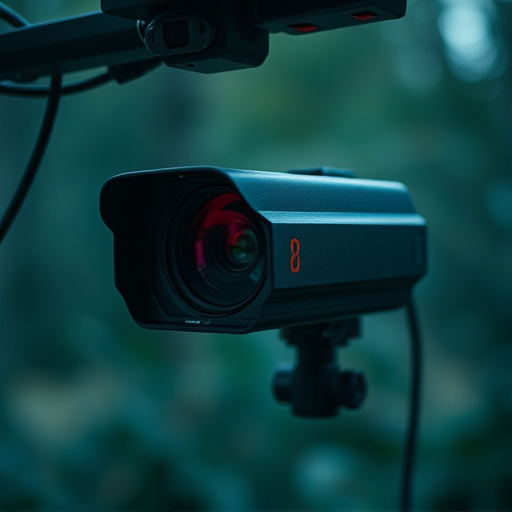Optical sensors, essential in modern tech, power concealed cameras for babysitter monitoring, enabling data collection through light detection. Versatile sensors, from infrared to image sensors, offer discreet or visible surveillance tailored to family needs. Legal considerations, including privacy laws, require explicit consent and strict data handling practices for ethical monitoring. Advanced technology detects hidden cameras using thermal imaging and optical sensor sweeps, prioritizing child safety.
In today’s digital era, optical sensor detection sweeps have become essential tools for various applications, including professional babysitter monitoring. Understanding the principles and functionality of optical sensors is crucial for selecting appropriate detection methods. This article explores advanced techniques, focusing on concealed cameras for babysitter monitoring and delving into legal considerations. By implementing these professional methods, parents can ensure safety while navigating the complexities of hidden camera systems in homes.
- Understanding Optical Sensors: Principles and Functionality
- Choosing Suitable Detection Methods for Babysitter Monitoring
- Implementing Concealed Camera Systems: Legal Considerations
- Advanced Techniques to Detect Hidden Cameras in Homes
Understanding Optical Sensors: Principles and Functionality
Optical sensors are integral components in various modern technologies, including Concealed Cameras for Babysitter Monitoring. These sensors operate by detecting and measuring light, which enables them to capture images or gather data in different environments. The functionality of optical sensors hinges on their ability to convert light signals into electrical signals. This process involves the use of photodetectors that can sense the presence, intensity, and wavelength of light.
The principles behind optical sensor detection are based on how light interacts with specific materials and structures. For instance, in the context of monitoring, infrared sensors can detect heat signatures, while image sensors capture visible light to produce clear pictures. This versatility makes optical sensors indispensable in numerous applications, from security systems to medical devices, ensuring efficient data collection and analysis.
Choosing Suitable Detection Methods for Babysitter Monitoring
When considering concealed cameras for babysitter monitoring, it’s crucial to select detection methods that blend seamlessly into the environment. This ensures the privacy and comfort of both the babysitter and the family, while still providing effective surveillance. The suitability of a method depends on various factors such as the layout of the home, the number of children, and the level of activity expected during the monitoring period.
For instance, small, discreet devices integrated into everyday objects like toys or clocks can offer unobtrusive monitoring. These concealed cameras capture natural moments without alerting the babysitter to their presence. Conversely, more visible yet strategically placed cameras in common areas can also serve as a deterrent for inappropriate behavior while still allowing families to remotely observe interactions. Ultimately, choosing the right detection methods involves balancing privacy concerns with comprehensive coverage tailored to individual family needs.
Implementing Concealed Camera Systems: Legal Considerations
Implementing concealed camera systems, such as those used for babysitter monitoring, raises legal considerations that cannot be overlooked. The use of hidden surveillance devices is subject to specific regulations and privacy laws, which vary significantly from one jurisdiction to another. It’s crucial for professionals employing these methods to understand and adhere to these legal frameworks to ensure compliance and protect the rights of all involved parties, especially children and employees.
In many regions, using concealed cameras without explicit consent can constitute a breach of privacy. This is particularly sensitive in domestic settings where the expectation of privacy is high. Legal experts recommend obtaining written permission from all parties before installing any surveillance equipment, ensuring open communication about the monitoring process to maintain transparency and trust. Additionally, regular reviews of recorded footage and strict data storage policies are essential to respect privacy rights while leveraging technology for safety purposes.
Advanced Techniques to Detect Hidden Cameras in Homes
In today’s digital age, privacy concerns have led to the development of advanced techniques to detect hidden cameras in homes, especially those used for babysitter monitoring. Professional methods employ thermal imaging and infrared technology to uncover concealed devices, as hidden cameras often emit heat signatures different from their surroundings. This non-invasive approach allows homeowners to ensure their spaces remain secure without causing damage or disruption.
Additionally, expert investigators utilize advanced optical sensor sweeps, analyzing visual patterns and anomalies that might indicate the presence of a camera lens. These techniques are particularly effective in identifying minute details that could be missed by the naked eye, ensuring that even the smallest hidden cameras are detected. This is especially crucial when it comes to safeguarding children under the care of babysitters, as Concealed Cameras for Babysitter Monitoring highlight the need for vigilance and proactive measures.
Optical sensor detection, when combined with advanced technologies, offers a comprehensive solution for concealed camera systems in homes and babysitting environments. While legal considerations must be navigated, choosing the right detection methods can ensure peace of mind for parents and guardians. By understanding optical sensors and implementing professional techniques, such as advanced hidden camera detection, one can create a safer space for children, fostering trust and security without compromising privacy. This article has explored these methods, providing valuable insights into navigating this delicate balance in today’s digital landscape.
